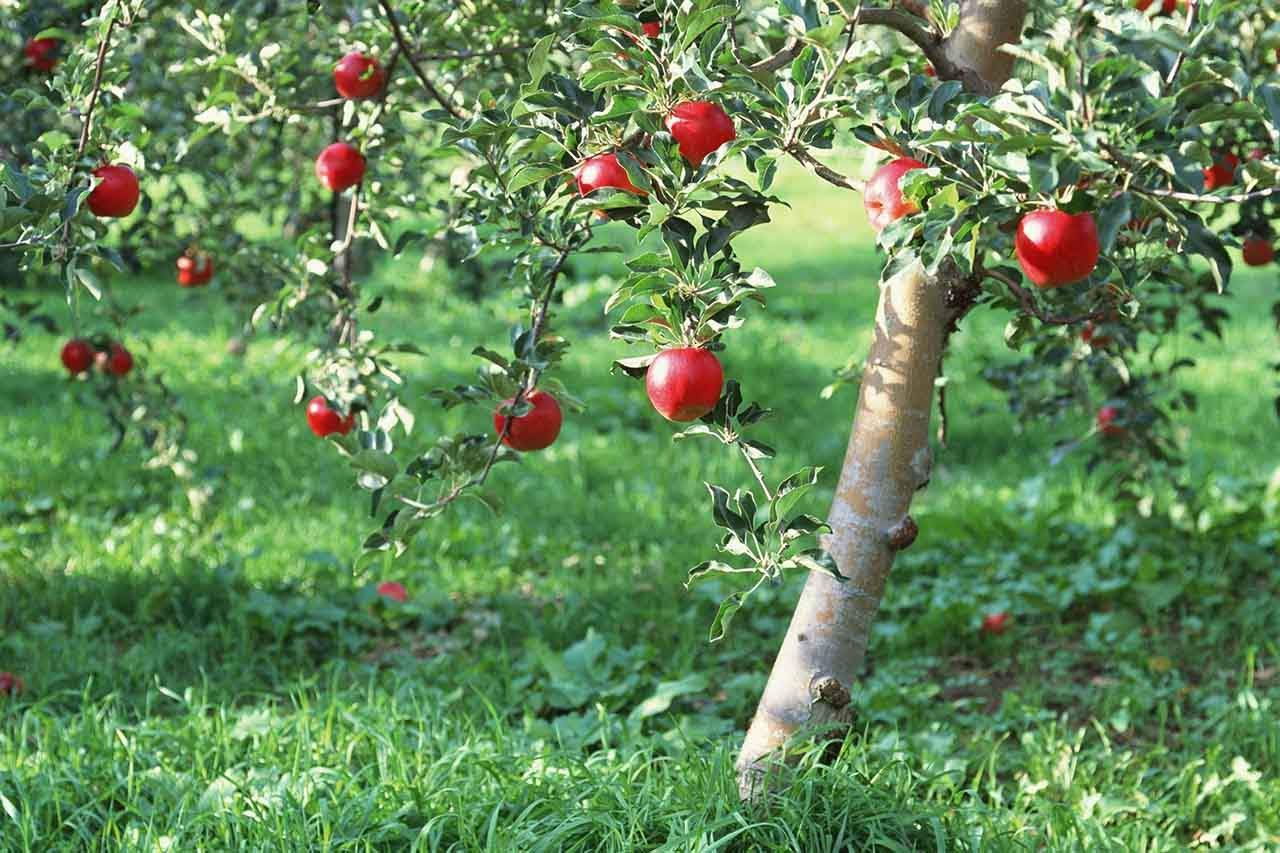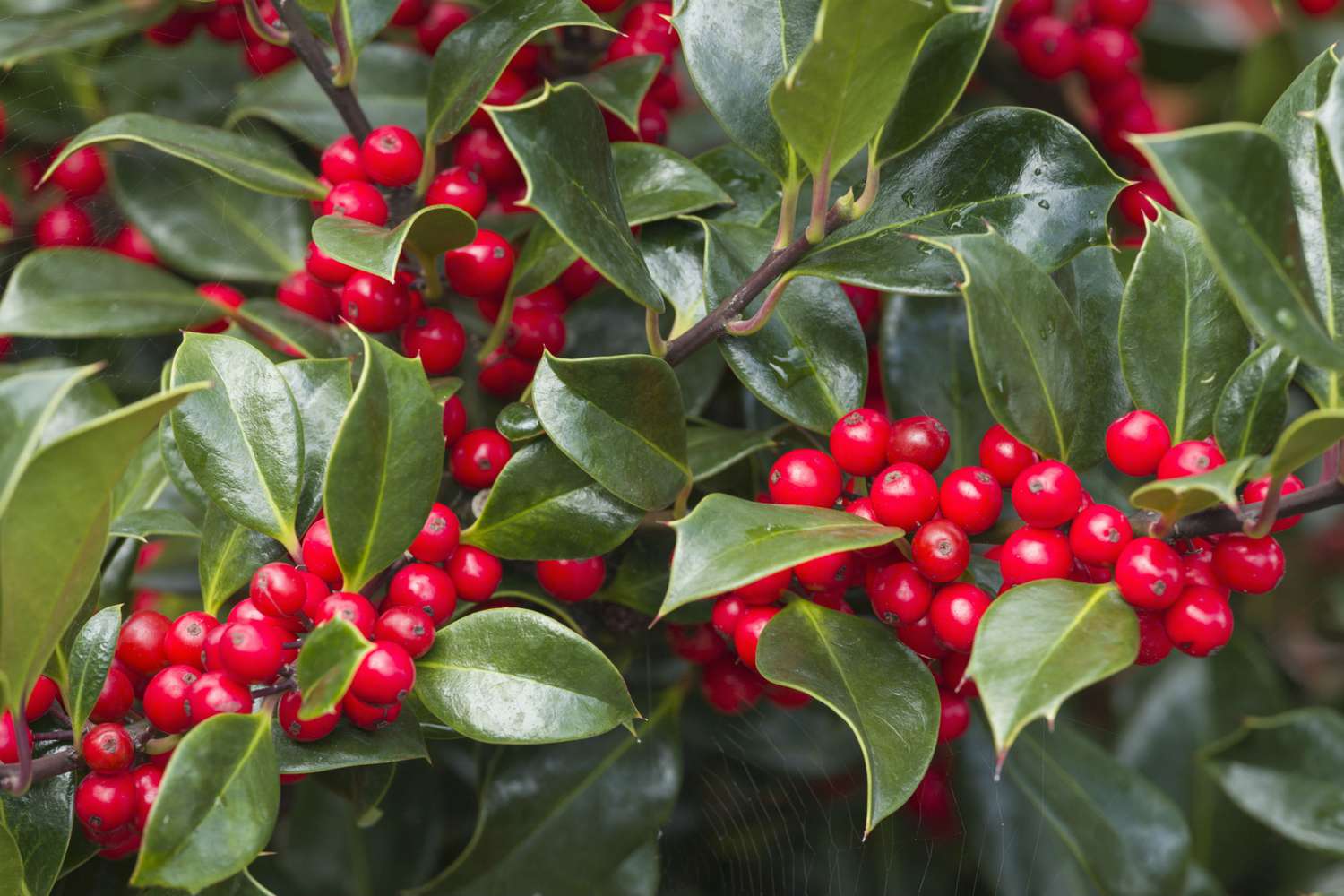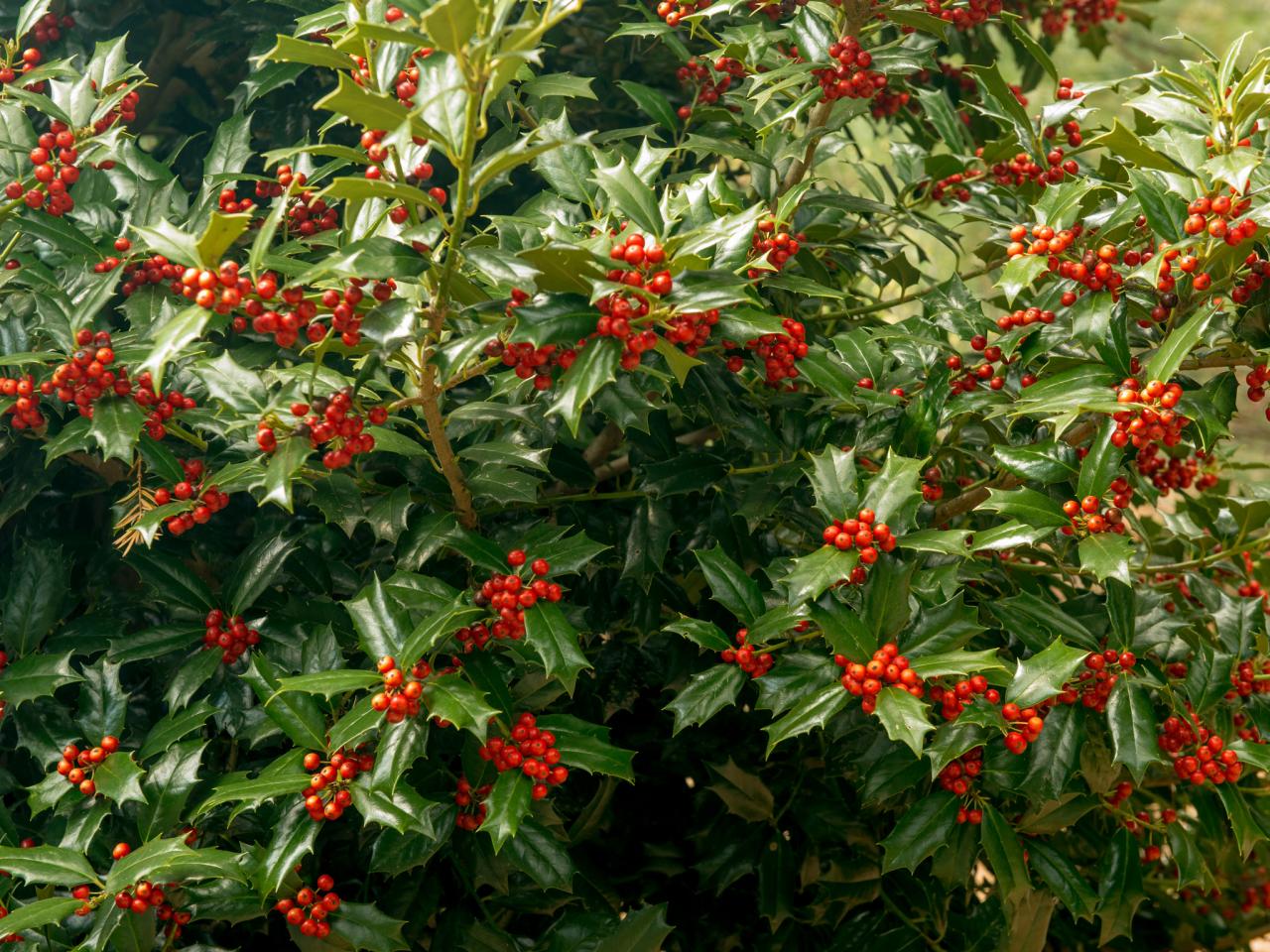Home>Garden Design>Planning Your Garden>How Fast Do Holly Trees Grow


Planning Your Garden
How Fast Do Holly Trees Grow
Modified: January 22, 2024
Learn about the growth rate of holly trees and get helpful tips for planning your garden. Create a beautiful landscape with these fast-growing trees.
(Many of the links in this article redirect to a specific reviewed product. Your purchase of these products through affiliate links helps to generate commission for Chicagolandgardening.com, at no extra cost. Learn more)
Table of Contents
Introduction
Welcome to the world of holly trees! Whether you are a seasoned gardener or a novice, planning your garden to include holly trees can be a rewarding experience. These evergreen beauties are not only visually appealing, but they also offer many benefits to your outdoor space. From providing shade and privacy to attracting birds and wildlife, holly trees bring life and vibrancy to any landscape.
In this article, we will explore the factors that affect the growth of holly trees and the environmental conditions necessary for their optimal growth. We will also discuss the different varieties of holly trees and their growth rates, as well as provide some helpful tips for faster growth. Lastly, we will address common problems and provide solutions to ensure your holly trees thrive.
So, if you’re ready to create a garden oasis with the majestic presence of holly trees, let’s dive in and discover how to make your holly trees flourish!
Factors Affecting the Growth of Holly Trees
Several factors play a crucial role in determining the growth of holly trees. By understanding these factors, you can make informed decisions to promote healthy and robust growth in your holly trees. Let’s take a closer look at some of these key factors:
- Soil Quality: The quality of the soil greatly influences the growth of holly trees. These trees prefer well-draining, acidic soil with a pH level between 5.0 and 6.5. Before planting holly trees, it’s important to test your soil and amend it if necessary to create the ideal growing conditions.
- Light Exposure: Holly trees thrive in full sun to partial shade conditions. They need at least 4 to 6 hours of direct sunlight daily to grow and develop properly. Insufficient light can result in weak growth and reduced foliage density.
- Watering: Adequate watering is essential for the growth of holly trees, especially during the establishment phase. Ensure that the soil remains consistently moist but not waterlogged. Deep watering is recommended rather than frequent shallow watering, as it encourages a strong root system.
- Pruning: Pruning plays a vital role in shaping the growth of holly trees. Regular pruning helps maintain their desired form and encourages new growth. It’s best to prune holly trees during late winter or early spring before new growth appears.
- Fertilization: Providing the right nutrients through fertilization can significantly enhance the growth of holly trees. Apply a slow-release, balanced fertilizer in early spring and mid-fall to promote healthy foliage and strong root development.
- Pests and Diseases: Like any other plant, holly trees can be susceptible to pests and diseases, which can hinder their growth. Common pests include aphids, scale insects, and spider mites. Regular inspection and appropriate pest control measures can help protect your holly trees and ensure their healthy growth.
By paying attention to these factors and addressing any potential issues, you can create an optimal environment for your holly trees to thrive and reach their full potential.
Environmental Conditions for Growth
Holly trees can adapt to different environments, but providing them with the right conditions will contribute to their overall growth and health. Let’s explore the key environmental factors that are important for the growth of holly trees:
- Temperature: Holly trees can withstand a wide range of temperatures, but they generally prefer moderate climate conditions. Most holly tree varieties can tolerate winter temperatures down to -10°F (-23°C) or lower, making them suitable for various regions.
- Humidity: Holly trees are versatile and can adapt to different humidity levels. However, they tend to thrive in areas with moderate to high humidity. If you live in a dry climate, consider providing supplemental humidity by misting the leaves or using a humidifier.
- Wind Exposure: Although holly trees are relatively wind-resistant, strong winds can damage their foliage and stunt their growth. Planting holly trees in a sheltered location or providing a windbreak can help protect them from harsh winds.
- Winter Protection: While holly trees are generally hardy, it’s important to protect them during severe winters, especially if you live in an area with extremely low temperatures. Applying a layer of mulch around the base of the tree and wrapping it with burlap can provide insulation and prevent frost damage.
- Pollination: Some holly tree varieties require cross-pollination between male and female plants to produce berries. If you want to ensure berry production, make sure to plant compatible male and female holly trees within close proximity.
- Space for Growth: Holly trees require adequate space for their root systems to develop. When selecting a planting site, make sure there is enough room for the tree to grow both vertically and horizontally without being cramped.
By understanding and providing the right environmental conditions, you can create a favorable habitat for your holly trees, ensuring their healthy growth and longevity.
Varieties of Holly Trees and Their Growth Rate
Holly trees come in a variety of species and cultivars, each with its own unique growth rate and characteristics. Understanding the different varieties can help you choose the right holly tree for your garden based on your desired growth rate and overall aesthetics. Here are some popular holly tree varieties and their respective growth rates:
- American Holly (Ilex opaca): This native holly tree species is known for its glossy, dark green leaves and bright red berries. American holly trees have a slow to moderate growth rate, typically reaching a height of 40 to 50 feet (12 to 15 meters) over several decades.
- Chinese Holly (Ilex cornuta): Chinese holly is a versatile evergreen tree with spiky leaves and abundant red berries. It has a moderate growth rate and usually reaches a height of 15 to 25 feet (4.5 to 7.5 meters) over several years.
- Yaupon Holly (Ilex vomitoria): Native to the southeastern United States, yaupon holly is a popular choice for its small, dense form and tolerance to various growing conditions. It has a moderate growth rate, typically reaching a height of 15 to 20 feet (4.5 to 6 meters).
- Foster Holly (Ilex x attenuata ‘Fosteri’): This holly tree is a hybrid variety known for its glossy, dark green leaves and abundant red berries. It has a medium growth rate and usually reaches a height of 20-30 feet (6-9 meters) within a few decades.
- Japanese Holly (Ilex crenata): The Japanese holly is a popular choice for its compact size and small, dense foliage. It has a slow to moderate growth rate, reaching a height of 5 to 8 feet (1.5 to 2.5 meters) over several years.
It’s essential to consider the growth rate of holly tree varieties when planning your garden. Slower-growing varieties are ideal if you have limited space or prefer a more controlled growth pattern. On the other hand, faster-growing varieties can quickly fill in empty spaces and provide a dense, lush appearance.
By selecting the right holly tree variety based on its growth rate, you can ensure that your garden achieves the desired look and meets your specific requirements.
Tips for Faster Growth of Holly Trees
If you’re looking to accelerate the growth of your holly trees, there are several tips and practices you can incorporate into your gardening routine. By following these tips, you can create optimal conditions for your holly trees to thrive and achieve faster growth. Here are some effective strategies:
- Proper Soil Preparation: Before planting holly trees, prepare the soil by incorporating organic matter such as compost or well-rotted manure. This improves soil structure, drainage, and nutrient availability, promoting faster growth.
- Choose the Right Location: Select a planting site that provides ample sunlight for your holly trees. Full sun exposure stimulates growth and ensures optimum photosynthesis.
- Watering: Consistent and deep watering is crucial, especially during the establishment phase. Water thoroughly, ensuring the soil remains moist but not waterlogged. Avoid overwatering, as it can lead to root rot and hinder growth.
- Fertilization: Apply a balanced fertilizer specifically formulated for holly trees during the growing season. This supplies essential nutrients that contribute to healthy growth. Follow the instructions on the fertilizer package for proper application rates.
- Pruning: Regular pruning encourages new growth and improves air circulation, enhancing the overall health and appearance of holly trees. Prune in late winter or early spring before new growth emerges.
- Mulching: Apply a layer of organic mulch around the base of your holly trees. This helps retain soil moisture, suppresses weed growth, and regulates soil temperature, promoting faster growth.
- Protection from Pests and Diseases: Regularly inspect your holly trees for any signs of pest infestation or disease. Taking proactive measures such as using organic pest control methods and promptly addressing any issues can prevent damage and promote healthier growth.
Remember that holly trees are generally slow to moderate growers, but by implementing these tips, you can enhance their growth rate and ensure faster development. However, it’s essential to be patient and allow adequate time for your holly trees to establish strong root systems and reach their full potential.
Common Problems and Solutions
Despite their resilience, holly trees can encounter a few common problems that can hinder their growth and overall health. Understanding these issues and their respective solutions will help you effectively address any challenges that may arise. Here are some common problems and their recommended solutions:
- Pest Infestation: Holly trees can be susceptible to pests such as aphids, scale insects, and spider mites. Monitor your trees regularly for signs of infestation, such as leaf discoloration, distorted growth, or visible insects. Use organic insecticidal soaps or horticultural oils to control pests, or introduce beneficial insects that prey on these pests.
- Fungal Diseases: Certain fungal diseases, such as powdery mildew or leaf spot, can affect holly trees. To prevent infection, ensure proper air circulation around the tree by pruning any overcrowded branches. If necessary, apply a copper-based fungicide according to the manufacturer’s recommendations.
- Poor Drainage: Holly trees prefer well-draining soil. If the soil becomes waterlogged or stays consistently moist, it can lead to root rot and hinder the tree’s growth. Improve drainage by incorporating organic matter into the soil or consider raising the planting bed to allow excess water to drain away.
- Improper Pruning: Improper pruning techniques or excessive pruning can weaken holly trees and slow their growth. Follow proper pruning guidelines, which include removing dead, damaged, or crossing branches and maintaining the tree’s natural shape. Avoid pruning during the active growing season, as this can disrupt growth.
- Lack of Nutrients: Nutrient deficiencies can impact the growth and appearance of holly trees. Regularly test the soil to ensure it has the appropriate nutrient balance. If deficiencies are detected, apply a balanced fertilizer formulated for holly trees, following the manufacturer’s instructions.
- Extreme Weather Conditions: Holly trees can be affected by extreme weather conditions such as drought, heatwaves, or severe cold. Ensure proper irrigation during dry periods and provide protection from extreme temperatures by mulching around the base of the tree and using burlap or other coverings during harsh winters.
By being proactive in identifying and addressing these common problems, you can promote the healthy growth and resilience of your holly trees. Regular maintenance, proper care, and prompt action are essential elements in ensuring the success of your holly tree garden.
Conclusion
Planning your garden to include holly trees can bring a touch of elegance and beauty to your outdoor space. By understanding the factors that affect their growth, providing the right environmental conditions, selecting suitable varieties, and implementing effective care practices, you can ensure the successful growth of your holly trees.
Factors such as soil quality, light exposure, watering, pruning, fertilization, and pest control all play a significant role in promoting healthy growth. Additionally, considering the environmental conditions, such as temperature, humidity, wind exposure, and pollination requirements, will contribute to the overall vitality of your holly trees.
By carefully choosing holly tree varieties based on their growth rates, you can achieve your desired garden aesthetics. Whether you prefer slower-growing varieties for a more controlled growth pattern or faster-growing ones to fill in empty spaces quickly, there is a holly tree suitable for your needs.
Implementing tips for faster growth, such as proper soil preparation, selecting the right location, adequate watering and fertilization, regular pruning, mulching, and protection from pests and diseases, will help maximize the growth potential of your holly trees.
Lastly, being aware of common problems that holly trees may encounter and actively addressing them will ensure the long-term health and vitality of your garden. From pests and diseases to drainage issues and extreme weather conditions, prompt action and proper care will help your holly trees thrive.
So, get ready to create a garden oasis with the majestic presence of holly trees. With a little planning, care, and attention, you can enjoy the beauty of these evergreen wonders for years to come.









